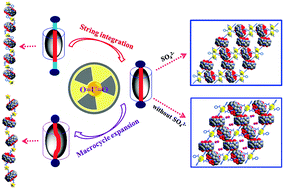Supramolecular inclusion-based molecular integral rigidity: a feasible strategy for controlling the structural connectivity of uranyl polyrotaxane networks†
Abstract
The assembly of two-dimensional (2D) large channel uranyl–organic polyrotaxane networks as well as structural regulation of uranyl-bearing units using jointed cucurbit[6]uril-based pseudorotaxanes with integral rigidity based on supramolecular inclusion is presented for the first time. This construction strategy concerning controlling molecular integral rigidity based on supramolecular inclusion may afford an entirely new methodology for coordination chemistry.


 Please wait while we load your content...
Please wait while we load your content...